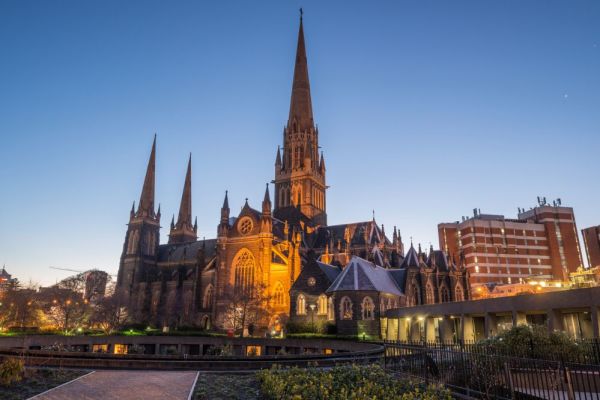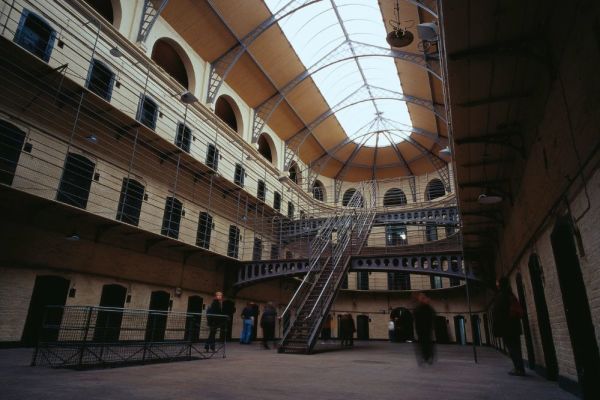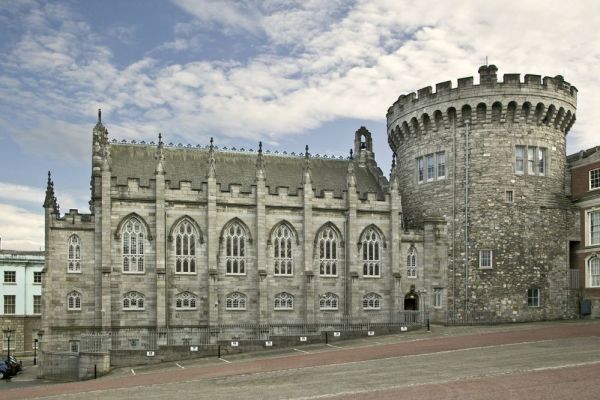DublinTravel Guide
The capital of the Emerald Isle brimming with history and culture, with highlights such as the magnificent Trinity College, founded in 1592, and the thriving music scene, to which you can dip into any night of the week at pubs like Whelan’s or O’Donoghue’s. It’s the sense of humour and attitude to life that is so infectious when you visit Dublin. Whether you’re taking a stroll through the gorgeous Georgian precinct or dining on some of the city’s world-class cuisine, what you’ll remember most about your Dublin holiday is the wonderful Dubliners themselves.If you’re planning a visit, explore our Dublin travel guide and find out how to make the most of your time in this fun city. We’ve collected the best tips from our travel experts, and have all sorts of suggestions for things to do, the best time to travel, where to stay in Dublin, getting around and more.
Dublin quick facts
Language
National language
English
Beverages
Bottle of Coke/Pepsi (330ml)
CAD $3.41
Local time
Thursday
5:17am
Currency
Euro
CAD $1.00 = EUR €0.64
Eating out
Restaurant meal (casual dining)
CAD $30.92
Electricity
Plug type: G
3 pins • 230V
Explore Dublin
Where to stay in Dublin?
Figuring out where to stay in Dublin can be a challenge. From the respected hotels of Temple Bar to the services apartments of The Liberties and heritage-listed hotels of St Stephen’s Green, you’ve got many options to choose between. The good news is you can’t go too far wrong wherever you decide to stay. Dublin’s myriad transport options make it easy to get from one area of the city to another. Below you’ll find some of our favourite suburbs and the kinds of accommodation you can expect to find there.
On Grafton Street, luxury is the operative word. Five-star hotels abound in this classy area. Centrally placed, staying on Grafton Street ensures comfort and access to many inner-city landmarks like St Stephen's Green. If you yearn for a bit of pampering along with convenience, this is one of the best areas to stay in Dublin.
Located at the south end of Grafton Street, St Stephen's Green is a large inner-city park surrounded on all sides by high-quality heritage-listed hotels. For a taste of the old world and some true rustic, traditional Irish hospitality, these are the perfect places to stay during your visit to Ireland.
Enjoy a true inner-city experience. Central Dublin offers all the plush inner-city hotels one would expect, along with a collection of older, heritage hotels and even a generous mix of apartments and hostels mixed in for those who don't mind a cheap stay. Being this close to the city centre puts you on the doorstep of everything that downtown Dublin has to offer.
Temple Bar is where you should stay if you'd like to keep things relatively fancy and still be able to take advantage of Dublin's premier nightlife and entertainment district. Take up residence in a serviced apartment or a plush hotel and enjoy a short walk to all the fabulous eateries, pubs and shopping that Temple Bar has to offer.
The Liberties area of Dublin is filled with lots of serviced apartment-style accommodation, which is fantastic if you'd prefer to base yourself in one location. This kind of accommodation will allow you to be much more self-sufficient – prepare your own food and plan your days, while staying in one of Dublin's best areas.
Believe us when we say, this is just the start. Book your Dublin accommodation today!
Things to do in Dublin
When considering things to do in Dublin, it’s best to start by asking yourself about the things that interest you the most. Are you a history buff, a foodie, a culture vulture, none of the above, or a bit of everything? The good news is, it doesn’t matter. From historic cathedrals to world-class galleries, Dublin has it all, so you can tailor your time here to suit your passions.
The modern home of Irish politics, much of Dublin Castle dates back to the 18th century when it was used as an outpost of the UK Government. Interestingly, the site has been home to a castle of one kind or another since the reign of King John in the 1100s. The Record Tower is the sole surviving part of this original structure.
If you appreciate a good beer, chances are you're already planning to make a beeline for the Guinness Storehouse as soon as you arrive in Dublin. We can't blame you! Home to a sprawling tourist facility as well as the Guinness factory proper, the Storehouse is a shrine to Ireland's most popular beer and presents a meticulously curated history of the art of brewing.
A former Irish prison turned public museum, Kilmainham Gaol was, from its construction in 1796 until its decommission in 1924, home to many of Ireland's most infamous criminals. Australia has a unique genealogical connection to Kilmainham – during our colonial period, a great many of its prisoners were exported to our shores as a result of overcrowding.
If you went straight to the Guinness Storehouse earlier, you'll likely have the Old Jameson Distillery as the second stop on the itinerary. Decommissioned when the company moved to a new distillery in 1971, this was the original site of what is now known as Jameson whiskey for almost two centuries. Constructed in 1780, the centre now provides a history of the brand and tutored whiskey tastings daily.
When thinking about theatres to visit in Dublin, there are two that leap readily to mind: the Gaiety Theatre on South King Street and the Abbey Theatre in North City. Historic theatres and home to some of the most important stage works of the last two centuries, these grand old buildings continue to mesmerise audiences with plays, musicals and other shows.
A living chronicle of the city's history during the 20th century, the Little Museum of Dublin boasts three floors with over 5,000 artefacts donated by the public. This museum is a monument to how Dublin has repositioned itself as a true global city in the last hundred years. Try Hatch and Sons Irish Kitchen in the basement for breakfast or lunch – you won't be disappointed.
The Dublin City Gallery, also known as the Hugh Lane Gallery, is home to an extensive permanent collection of Irish and international works. It also regularly features new exhibits by local contemporaries. Opened in 1908, this is one of the oldest modern art galleries in the world. It's a historic spot and the perfect place to spend a rainy afternoon.
Trinity College is one of Britain and Ireland's seven ‘ancient' universities. Modelled on its cousins Cambridge and Oxford, Trinity College was founded in 1592, making it Ireland's oldest university. First-time travellers to Ireland should note that locals may refer to Trinity College as the University of Dublin but, rest assured, they are talking about the same place!
Founded in 1191 and remaining to this day both the largest and tallest church in Ireland, St Patrick's Cathedral is unusual in that it's not the seat of a bishop (the Archbishop of Dublin's seat is in the Christ Church Cathedral Dublin just down the road). Now considered Ireland's national cathedral, this historic building is one of the most popular tourist destinations in the entire city.
For those who yearn to get out of the city and experience the natural wonder of the Emerald Isle, Wicklow Way is for you. A sprawling network of marked walking trails south of Dublin, Wicklow Way is a fantastic spot for those who love a good hike or a stress-free walk through tranquil surrounds. This is a perfect way to spend a day outdoors.
Did you know that a significant part of Dublin's history is that it was, at one point, a Viking settlement? If that piques your interest, make sure a visit to Dublinia is on your itinerary. The foremost home to artefacts and information on Dublin's Viking period, this historical recreation museum is a must for ancient history buffs.
The National Museum of Ireland comprises several different disciplines: natural history, archaeology, decorative arts and history, and country life (which serves as a reflection on traditional Irish life) are spread across its three separate branches. The home of history in Ireland, this is one stop for culture vultures that shouldn't be missed.
The Irish Museum of Modern Art (IMMA) is the most popular gallery of modern art in Ireland. Home to an extensive permanent collection, IMMA works hard to include a regular roster of exhibitions dedicated to works by local artists. The collection features more than 3,500 artworks with an emphasis on the recent past and the present.
Looking for an immersive experience? Then a Dublin tour is the way to go.
Dublin travel tips
Travelling to Ireland as an Australian is relatively easy, but it’s still good to read up on some key Dublin travel tips before you depart. We have so much in common with our friends on the Emerald Isle – heritage, laws, a love of beer and sport – that not only is getting around quite simple, but there’s also very little language barrier. Culture shock, beyond the extensive ancient history of Dublin, is not something Australian travellers need to worry about. The bureaucratic processes involved in visiting Dublin are quite straightforward as well.
Australian passport holders travelling to Ireland don't need to apply for any visas at all unless looking for work. Your Australian passport (valid for at least six months) will be enough to grant you entry. If you have any visa concerns, speak to your local Flight Centre representative for more in-depth Dublin travel advice.
While there is plenty of traditional Irish cuisine to find throughout Dublin, its status as a global city is reflected in the wide variety of international food available. Those who are picky or perhaps unadventurous eaters will find that there is plenty of familiar food in Dublin, from fast food favourites to generous homemade-style dishes in pubs.
When travelling to Ireland, you'll need to procure a UK/Ireland travel adapter from a local electronics retailer to deal with plugs and voltage. Most modern appliances like smartphones, laptops, cameras and tablets are equipped with dual-voltage settings, which means you'll likely not have to go to the trouble of getting an additional power convertor.
Ireland's busiest airport and the major international gateway to the country, Dublin Airport will likely be where you catch your first glimpse of the Irish countryside. A large but easy-to-navigate building, the airport is located about 10km north of Dublin in a suburb called Collinstown. It's also home to a large short and medium haul fleet of aircraft for those travelling on to other Irish cities.
Ireland uses the euro (€) as its primary currency. The Australian dollar, however, is typically not very strong against the euro, so it may pay to exchange more money for your trip than you think you'll need. Assuming that every Australian dollar you've got is worth half a euro in Irish currency is a generally sound policy.
Much like Australia, there isn't a strong tipping culture in Ireland. While certainly welcomed by service industry professionals like taxi drivers and restaurant waiters, you should not feel obligated to tip unless provided with truly exceptional service. If you would like to tip someone, aim for about 10% of your total bill.
Conversing with the locals and being able to read local signage won't be a problem in Dublin as English remains the primary language in Ireland. While a small subset of the population does still use the traditional Gaelic language for speaking and writing, it is very unlikely that you'll run into a situation where there won't be anyone who speaks English.
Flights to Dublin
Dublin food and drink
It’s very easy to find a hot meal in the city – many examples of the best Dublin food and drink are clustered quite close to the CBD. However, heading into the surrounding suburbs like Ballymount or Swords will reveal a few gems too. Dublin’s status as a multicultural European city is reflected in the breadth of international cuisine available, and it’s also home to a vibrant fine-dining scene. Whether you’re hitting Temple Bar for a late dinner or searching for an early morning coffee in The Liberties, Dublin won’t disappoint.
There are two key Dublin restaurant precincts that demand a visit. The historic Temple Bar district runs along the River Liffey in the city's centre and is full of classy restaurants – perfect if you're staying in the CBD. If you'd like to get out of the city centre, the main street of Swords (a northern suburb close to the airport) is packed with quality local eateries.
There's Irish coffee, which is delicious, and then there's Irish coffee, which is basically scotch in a mug. Keep that in mind when ordering a cuppa with breakfast! Some of the best coffee in Dublin can be found in the Temple Bar district in the city, but quality cafes can be found in just about any suburb.
The Irish are known worldwide for their love of a stiff drink. Nowhere is this proven more fully than in the many historic Dublin pubs that dot the city's streets. Homely, rustic Dublin bars and nightlife abound, some as old as the city itself, providing the perfect places for a comfortable evening out with companions – or even just by yourself. Grab a Guinness and relax.
Get a real taste for the local cuisine by booking a Dublin tour.
Dublin through your eyes
Where to shop in Dublin?
Dublin shopping is a true cosmopolitan experience. As the capital city of a country that embraces its working class origins, Dublin has a great love and respect for local businesses. Through this, a burgeoning fashion industry has taken root in the city’s arty districts, as well as many other businesses that deal in everything from locally sourced meat and produce to handmade furniture. If you’re on the hunt for a bargain, unique couture or a truly one-of-a-kind souvenir, a day spent shopping in Dublin will serve you very well indeed.
Get out and hunt for a bargain! Dublin markets are everywhere, like the Ha'Penny Flea Market located in North City or the Leinster Market on D'Olier Street, and they're filled with amazing deals on unique and interesting items both big and small. If you absolutely must have something weird or one-of-a-kind to remember your trip to Ireland by, chances are you'll find it here.
Dublin's foremost antiquing district, Frances Street is home to some of the city's most historic businesses and buildings. If you're stuck for what to buy in Dublin, this is the perfect place to hunt for souvenirs that tell of Ireland's long and varied history, as well as its many modern accomplishments. Come here if you love supporting local businesses.
Dublin shopping centres are home to day-to-day purchases and a refuge from the weather in equal measure. From large-scale centres like the Jervis Shopping Centre in North City to smaller outlying centres like the Charlestown Shopping Centre in Finglas North, you'll find what you need in no time. Ask for a Dublin shopping guide at your hotel to find out where your nearest shopping centre is.
Grafton Street is one of two major shopping precincts in the CBD (the nearby Henry Street is the other). Packed from end to end with antiques, boutiques and assorted upscale outlets, Grafton Street is considered one of the most expensive and well-appointed shopping streets anywhere in the world. It's a haven for fashionistas and those who simply cannot resist a bargain.
Cow's Lane is where Dublin's independent fashion industry resides. Those who love seeking out unique new styles, fabrics, garments and ideas need look no further than this extremely trendy part of Temple Bar. Fans of high fashion will be able to lose themselves for hours exploring the many local businesses that have turned this inner-city street into a living, local legend.
When is the best time to travel to Dublin?
The weather in Dublin doesn’t have the greatest reputation (at least, not by sunny Australian standards). The image conjured when one thinks of Ireland is of a land that is bursting with green landscapes but always with a grey sky above. How true to life is this vision? Honestly, it’s fairly accurate. But that’s not to suggest that the weather in Dublin is awful year-round – it really isn’t! In fact, it’s rarely anything but lovely even when it’s raining. Here’s a quick look at what you can expect out of Dublin during each part of the year.
Like their neighbours in Britain, the Irish absolutely love a gorgeous summer's day. While the cloud cover does hang about during summer, the Dublin temperature steadily climbs to about 19°C, which most Aussies should find quite comfortable. Appropriate clothing: Pack a raincoat if travelling in August Don't forget: Sunscreen – it might be cooler than home, but you can still get burnt.
Winter in Dublin really isn't as bad as you think it is. Despite being quite far north, the snowfall is rarely substantial and the temperature likes to jump between highs of 8°C and lows of 0°C. This doesn't stop the city from being beautiful, but it may make it harder to roll out of bed when the alarm goes off. Appropriate clothing: Warm clothes, and boots for the snowy days Don't forget: Set your alarm – just because it's dark out doesn't mean the day hasn't started!
During autumn, the temperature begins its descent into real coldness, arriving at about 10°C by November. The Dublin rainfall tends to surge in autumn, getting heaviest in November. Important too is that the average amount of sunlight also begins to drop substantially during autumn from about five hours per day at August's end down to just two hours per day in November. Appropriate clothing: Warm clothes and windcheaters Don't forget: Waterproof shoes if you plan on hiking either side of October.
For many, this is the best time to travel to Dublin. Spring begins a slow but steady climb back up to summer temperatures, starting at about 10°C in March and heading up to 17°C by June. Rainfall also decreases during this period, well below the average throughout the rest of the year, though it does tend to spike in June as the heat picks up. Appropriate clothing: Warm clothes Don't forget: Your hiking gear!
Don't miss out. Book your Dublin flight today!
How to get around Dublin
Getting around Dublin is easy thanks to the city’s modern approach to public transport and road infrastructure. From super-fast trains to convenient bike hire kiosks, there’s always an option for getting from A to B. Knowing which Dublin transport option works best for you will be a matter of considering your budget, you itinerary, and how much of the city you’d like to take in. To help get you started, here are just a few ways you can get around the city in no time at all.
Cabs are a familiar sight in Dublin, as they are in many cities around the world. From the multi-coloured National Radio Cabs to the black and yellow visage of Lynk cabs, Dublin taxis are usually the most direct way to get to wherever it is you need to go with minimal hassle. Don't forget: ride-sharing services like Uber operate in Dublin as well.
Hiring a bicycle and exploring the city under your own steam is one of the best ways to see the Dublin sights at your leisure. Simply jump on the Dublinbikes website (the primary portal for Dublin bike hire), find out where your nearest bike rack is located, set up an account and you're on your way.
The Dublin public transport network is among the best in the world with trains, buses and light rail all available for public use. Just pick yourself up a Leap Card on arrival in Dublin and keep it topped up for access to all three services, city-wide. As a note, the train is referred to as the DART (Dublin Area Rapid Transit) and the light rail is called LUAS (pronounced ‘Lewis').
The weather's great, you've just spent 23 hours on a plane, and you're desperate to stretch your legs. Well, if it's not too rainy, walking Dublin is one of the best ways to see the city at your own pace. Taking a walk allows you to duck into side streets and discover the city's hidden gems in a way that simply isn't possible via mass transit.
Let us help you organise your own wheels for exploring. Hire a car in Dublin today!
What are the best parks in Dublin?
They call it the Emerald Isle for a reason: in a nation where green landscapes are the norm, Dublin parks, gardens and hiking areas hold their own ground. Perfect for getting a bit of exercise while on holiday or taking a much-needed stroll to decompress from the stress of international transit, sites like the National Botanic Gardens and Merrion Square in the city are must-see additions to your itinerary. Breathe deep of the Irish air, head outside, and immerse yourself in the green.
One of the largest recreational spaces in any European city with a whopping 707 hectares, Phoenix Park is home to the Dublin Zoo, the Papal Cross, the Wellington Testimonial, the Deerfield Residence, and Magazine Fort. You read that correctly – all of this exists in the same park, and there's actually more. Save a whole day (at least) and see it all for yourself.
A beautiful square found in one of Dublin's most popular and vibrant social districts, Temple Bar Square is the perfect spot to relax and people-watch after a long day of retail therapy in the CBD. Grab a coffee or find a nice pub and kick back, or explore the many nearby stores and community landmarks.
Located in the Docklands district, Mayor Square is an inner-city residential area filled with shops, public areas, and historic landmarks to explore. The perfect spot to take a break while on your way to The Irish Emigration Museum (EPIC ) or the Famine Memorial, this is a secluded space amid one of the city's busiest districts.
A memorial for the 49,400 Irish soldiers killed during World War I, as well as those Irishmen and women who have died while serving other countries, the Irish National War Memorial Gardens are a beautiful, peaceful space to explore and reflect. The gardens are open year-round to the public.
A simple, open park perfect for a picnic, Mountjoy Park is an oasis of green among the city streets. Surrounded on all sides by historic Dublin architecture and truly spectacular in the autumn when the leaves begin to turn orange, Mountjoy Park is the ideal spot to take a break on your walking tour of the city's north.
Getting from park to park is so much better with your own wheels. Hitch your ride now!










